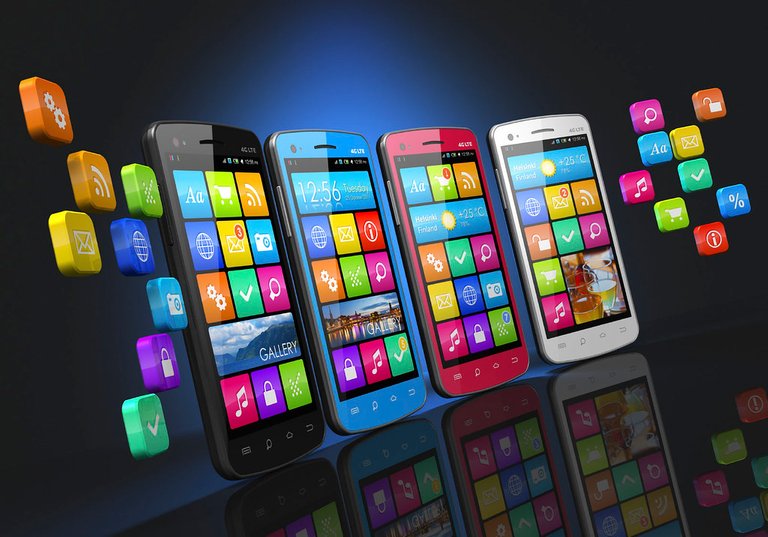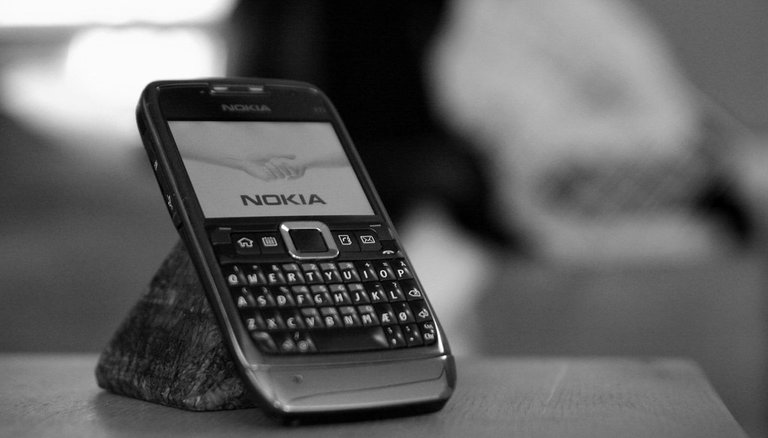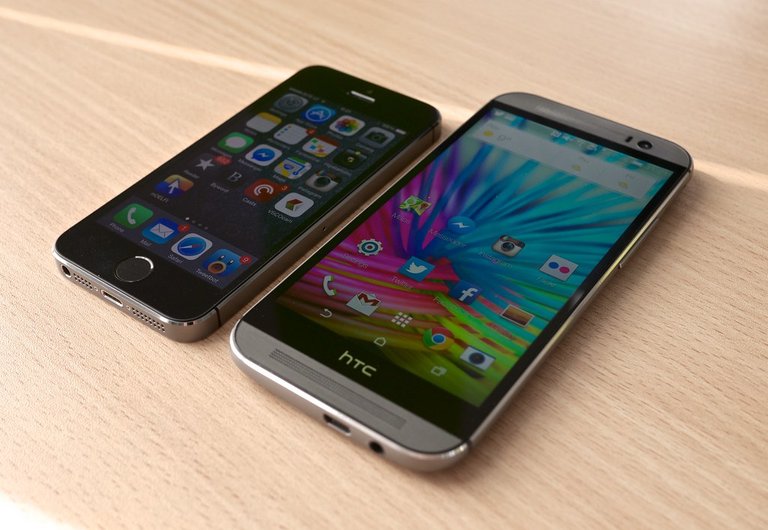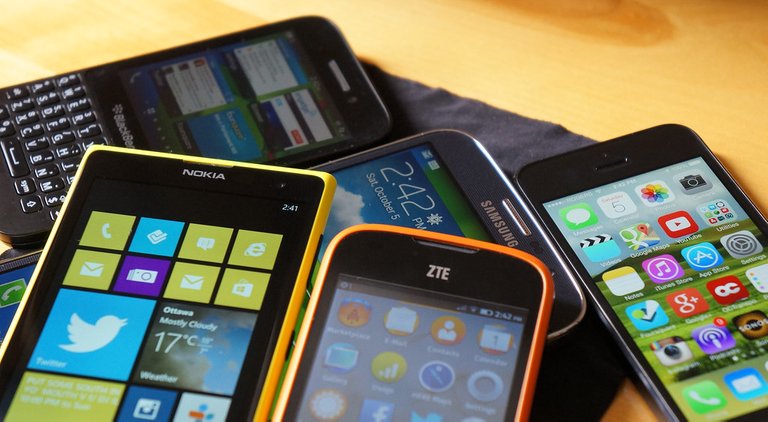The Evolution of Mobile Operating Systems (From 1990's till date)
Just like you can not run your computer system (Laptop, Desk top, Palm top e.t.c) without first installing an operating system on it, in the same realm, no modern smart phone will fully function without an operating system.
Since the era of smart phones and tablets, mobile operating system has become an important software application that must first be pre-installed on any phone or tablet prior to its usage. Most times, It is usually installed by the technical crew of the company who produced such phones and tablets before selling it out to the wholesalers and finally to its final consumer and that may be the reason why people are not fully aware of mobile phone operating systems.

One of the primary functions of mobile operating systems is to manage the hardware and software resources of modern smartphones and tablets on which it is installed. Both Android operating system and iPhone operating systems (ios) are the two biggest and most common mobile operating systems in use, according to research, the two make up 98.7 percent of the market share in the U.S (United States). However, it is indisputable that Android has the highest number of users throughout the world, this may be attributed to the diversity of the number of producers such as Motorola, HTC, Samsung, LG among others, whereas, ios is limited only to Apple products.
According to StatCounter via Mobile Operating System Market Share Worldwide Apr 2020 - Apr 2021 here, Android operating systems made up of 72.2 percent market share world wide while ios is made up of 26.99 percent, Samsung made up of 0.39 percent, KaiOS made up of 0.17 percent, Windows made up of 0.02 percent and 0.14 percent was attributed to the other mobile operating systems.
The Evolution of Mobile Operating System
- The emergence of Symbian Operating System in late 1990's

Many people used to refer Symbian as the most successful failure in mobile tech industry, this is due to its inability to keep pace with today's mobile phone operating systems despite being the first modern operating system (OS) for mobiles devices. Prior before Symbian was the first ‘smartphone’ from IBM Simon which was launched in 1994, followed by Palm Operating System which was launched in 1996 (both were Personal Digital Assistant (PDA) and not belong to today's mobile operating systems) and finally the era of modern mobile operating system which was led by Symbian.
Symbian was a descendant of operating system known as EPOC. EPOC began its operation in the year 1980's by a company called Psion. However, in 1998, Nokia, Motorola and Ericsson jointly ventured into EPOC and that lead to Symbian operating system.
Symbian operating system was initially partitioned into three distinct platforms called user interface in order to take care of each of the amalgamated mobile companies. Symbian was dominating the tech industry until 2007 when the two new mobile companies (Android and ios). Android launched its operating system and Apple also launched its own operating system through iPhone. Although Nokia later acquired Symbian in 2008 in order to keep up with the two brands but the rest is history till today.
- The Era of full modern mobile operating system (2007)

Apple released its mobile operating system through iPhone in 2007 known as 'ios' followed by the first Android called HTC Dream in the year 2008. They both shifted the attention of mobile tech industry from dominated Symbian to themselves and not long they both became the only two reigning mobile operating systems in the market share, they reign from late 2010 even till now. They both belong to the era of full modern mobile operating systems because unlike Symbian which is a descendant of EPOC, a pocket Personal Digital Assistant (PDA), both Android and iPhone started afresh without any inheritance implementation and that gave them the edge to implement a new operating system that suits the trend in the mobile internet age.
- The Era of Microsoft operating system and Blackberry operating system Tizen among others (2010 till date)

Windows Phone (WP) and a new operating system (OS) was developed by Microsoft inc. towards the end of the year 2010, while Blackberry operating system was launched in the year 2013 by the company called Research In Motion (RIM). Window operating system, after its launched in year 2010 also struggled to make a wave in the mobile tech industry with a convincing product. They collaborated with Nokia in 2010, who had that time still struggling to cope with Android and iPhone despite dominating the sphere in the early years.
BlackBerry Operating System is just like Apple which runs only on iPhone, BlackBerry only runs on variant of Blackberry mobile devices such as the old BlackBerry Bold, Pearl, Curve and Storm series. It works well with smartphone and people embraced it so well due to its robust support and integration with company internet mail. It has physical keyboard interface and has easy deployment for most Android applications, especially BB10 version. It has a closed architecture, except Android applications. Its application tends to be more costly and its limited.
Other mobile operating systems
Among other mobile operating systems include: Tizen which was developed by Samsung Electronics. It is a Linux based operating system and was launched in 2011 but did not make much wave like those in the market already. Sailfish OS is also a a Linux based operating developed by Jolla. Ubuntu Touch, is also an operating system belongs to Linux but based on Ubuntu. Plasma Mobile is a Linux but based on KDE neon. PureOS is also a Linux but based on Debian. PostmarketOS is a Linux but based on Alpine Linux. KaiOS is a Firefox OS but based on Linux kernel.
Final remarks!
Both Apple's iPhone operating system and Android operating system developed by Google still remain the most used in the market share with Android operating systems made up of 72.2 percent market share world wide while iOS made up of 26.99 percent, Samsung made up of 0.39 percent, KaiOS made up of 0.17 percent, Windows made up of 0.02 percent and 0.14 percent was attributed to the Unknown mobile operating system according to a source here. Of course, no technology reign forever, but the tendency of other mobile operating systems overridden the two of them soon is low.
Thanks for reading through and I hope this treatise has rekindled your old memory.
References
1. Mobile operating systems — The rise of Android and iOS
2. History of Symbian OS
3. Symbian OS
4. What Does BlackBerry OS Mean?
5. Comparisons Between Mobile OSes
6. Mobile phone operating systems - Apple IOS / Android / Windows / Blackberry
It is interesting the way in which you narrate the evolution of technology applied to mobile phones, and certainly this is changing rapidly according to market demand.
Thanks @emimoron for such a remarkable remarks.
Hi @noble-noah you make an interesting tour from their commercial beginnings of operating systems, some with closed or proprietary architecture and others not. Also, the inherent characteristics of the processor and its associated components give a picture that supports the journey you make. Thank you.
It's a pleasure @alfonsoalfonsi . I'm glad you enjoyed it!
Thanks for your contribution to the STEMsocial community. Feel free to join us on discord to get to know the rest of us!
Please consider supporting our funding proposal, approving our witness (@stem.witness) or delegating to the @stemsocial account (for some ROI).
Please consider using the STEMsocial app app and including @stemsocial as a beneficiary to get a stronger support.
Congratulations @noble-noah! You have completed the following achievement on the Hive blockchain and have been rewarded with new badge(s) :
Your next payout target is 2000 HP.
The unit is Hive Power equivalent because your rewards can be split into HP and HBD
You can view your badges on your board and compare yourself to others in the Ranking
If you no longer want to receive notifications, reply to this comment with the word
STOPCheck out the last post from @hivebuzz:
Support the HiveBuzz project. Vote for our proposal!